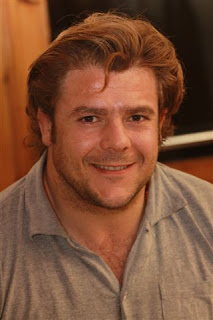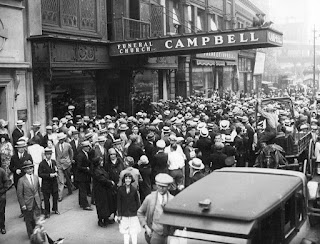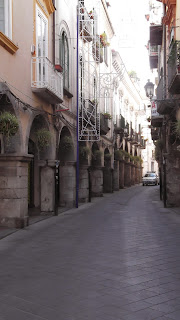Four teams played three matches - all in one day
 |
| The Genoa team that won the Italian Championship for the third time in 1900 |
The event was organised by the newly-formed Italian Football Federation, set up earlier in the year after Genoa and FC Torinese had met in the first organised match played on Italian soil.
The two other teams invited to take part were also from Turin, namely Internazionale di Torino and Ginnastica Torino. They assembled at the Velodromo Umberto I, where there was space for a pitch at the centre of a cycle track, with the first match kicking off at 9am.
Internazionale beat FC Torinese 1-0 in the opening game, after which Genoa defeated Ginnastica 2-1. After a break for lunch, the final kicked off at 3pm, Genoa winning again by a 2-1 scoreline, reportedly after playing extra time. The trophy was presented by the Duke of the Abruzzi.
At least four members of the Genoa team were British, including the goalkeeper, James Spensley, a doctor from Stoke Newington in London who had arrived in the port city in 1897 to look after the health needs of British sailors, who regularly stopped off in Italy en route to or from India via the Suez Canal.
Spensley was one of the pioneers of football in Italy, having organised the historic match between Genoa and FC Torinese. He is held in high regard still in the city, where a plaque can be found on the wall of the house in which he lived. Today, a section of the modern Genoa supporters' club calls itself Genoa Club Spensley.
Genoa, which even today is still registered as Genoa Football and Cricket Club, retaining the anglicised version of the Italian city name Genova as well as the reference to the very non-Italian game of cricket, tends to be accepted as Italy's oldest football club, although that claim is disputed.
 |
| A football match at the Velodromo Umberto I in Turin |
Football was already a popular sport in England and Nottingham was home to the world's first professional club, Notts County. Bosio formed a team called the International Football Club with players drawn from his workplace, although with no other teams to play against their get-togethers were essentially no more than informal kickabouts.
The crowd that witnessed Genoa's triumph was modest. Around 50 spectators watched the semi-finals and witnesses to the final put the crowd at no more than 100, which was reflected in takings for the day of just 197 lire, the admission charge having been set at one lira, with some discounts.
Life in Italy at the time was tough, however. Food was in short supply and on the very day that the football champions were being crowned in Turin, bread riots were taking place in Milan, with as many as 400 rioters killed after the army was sent in to quell the disorder.
What's more, Italian sports fans were much more interested in cycling, riding and hunting. Football, which had existed in Italy since a game called Calcio Fiorentino was played during the Renaissance, would not catch on for a few more years.
The Italian Championship, though, was established. The following year it was played over three days while the 1900 event spanned almost three weeks. By 1910 it had evolved into a season-long league format, with nine teams playing each other home and away.
Genoa were the dominant team for two decades, winning six of the first seven championships, and then three times more until their run came to an end in 1925.
 |
| A view over the rooftops of Genoa towards the harbour, with the tower of San Lorenzo Cathedral in the centre |
The port city of Genoa (Genova), the capital of the Liguria region, has a rich history as a powerful trading centre with considerable wealth built on its shipyards and steelworks, but also boasts many fine buildings, many of which have been restored to their original splendour. The Doge's Palace, the 16th century Royal Palace and the Romanesque-Renaissance style San Lorenzo Cathedral are just three examples. The area around the restored harbour area offers a maze of fascinating alleys and squares, enhanced recently by the work of Genoa architect Renzo Piano, and a landmark aquarium, the largest in Italy.
Travel tip:
The Velodrome Umberto I, which was briefly the home of the Juventus football club, was demolished in 1917 as the Crocetta district of Turin saw significant development. Buildings in neo-Gothic and Art-Nouveau style are now characteristic of this elegant area just south of the city centre, criss-crossed with tree-lined avenues. On the northern edge, near the Gallery of Modern Art, is an impressive statue of Victor Emmanuel II, mounted on a 39-metre column.
Home








